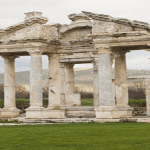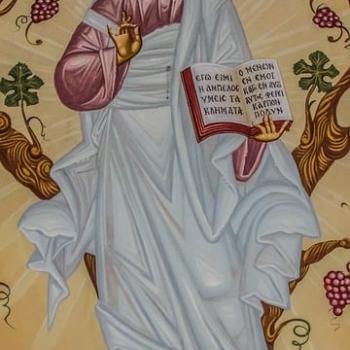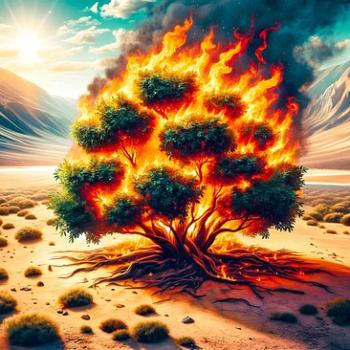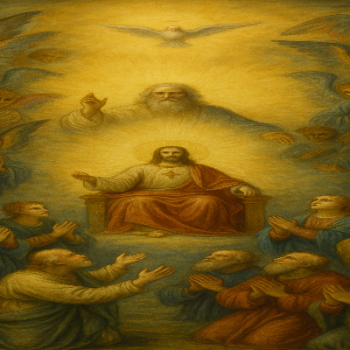
“I do not know what happens after the physical brain dies…I do not think anyone does know.” – Sam Harris, atheist.
The mystery of death, or more accurately, the mystery of what, if anything, happens upon the death of a living being, has beguiled human beings since the advent of humanity. Do living things pass to another life, or do they simply cease to exist?
In this paper, I will examine what the Bible and the Catholic tradition have to say about the afterlife. First, however, we must ask what death is.
I want to briefly provide two definitions of death that are relevant to this essay. The first is drawn from the medical and legal perspective. In the view of science and the law, death occurs when it is the announced opinion of a physician, based on ordinary standards of medical practice, that an individual has experienced an irreversible cessation of spontaneous respiratory and circulatory functions or irreversible cessation of all functions of the entire brain, including the brain stem. (See Leming, Michael R., and George E. Dickinson. Understanding Dying, Death, and Bereavement. New York: Holt, Rinehart, and Winston, 1985).
The second definition is philosophical and theological. In these disciplines, death is generally defined as the separation of the spiritual soul from the physical body. (See Plato. Gorgias. Oxford University Press, USA, 1994; also James 2:26).
It is often accepted as certain that if one believes in God, one believes that the soul lives on in another realm or pitch of existence. However, the characteristics of the afterlife vary widely depending on the faith tradition they are drawn from.
The Old Testament makes reference to two sects of Judaism: the Pharisees and the Sadducees. A third sect, not mentioned in Scripture but relevant to the discussion at hand, is the Essenes. The Pharisees and Essenes believed in the soul’s survival upon the death of the body.
The Pharisees further believed in the resurrection of the physical body after death. This view is in line with the teachings held by classical Judaism. Professor Jon Levenson notes that “resurrection of the dead was a central belief, essential to defining oneself as a Jew. (See Levenson, Jon Douglas. Resurrection and the Restoration of Israel. Yale University Press, 2006).
The Pharisees stressed a literal resurrection of the physical body, which would be reunited with an individual’s spirit. Their worldview embraced a future restoration of God’s original design for His world. The Pharisees envisioned a time of redemption in which God would realign the physical creation with the ethereal realm (See Young, Brad H. Paul, the Jewish Theologian. Baker Books, 1995). In this sense, the Pharisees’s teachings on resurrection appear congruent with certain aspects of Catholic eschatology, specifically, the general judgment at the time of the Second Coming.
The Essenes were a very pious separatist sect who believed in maintaining their own purity in isolation from other Jews if possible. They believed in a corruptible, material body and a spiritual and immortal soul. The souls of the righteous were thought to pass to a heavenly state similar to the Greek Elysian Fields. Those souls that were judged to be evil were relegated to a dark pit where they endured endless punishment. (See Josephus, Flavius. The Wars of the Jews; Or, The History of the Destruction of Jerusalem. DigiCat, 2022).
Interestingly, while the Sadducees accepted the existence of God, they did not believe in an afterlife, per se. While there is much ambiguity surrounding the subject, the Sadducees thought that the dead entered a place called Sheol.
Sheol is considered the abode of the dead. However, the characteristics of Sheol seem to evolve in Scripture. Initially, it was considered the abode of all the dead, righteous and unrighteous alike. However, this view would eventually morph into a place where the damned were punished. As such, when the Scriptures were translated into Greek, Sheol became known as Hades. Hades is the Greek translation of the Hebrew word Sheol and is translated to the word Hell in English. In the New Testament, a new term for Hell is introduced: Gehenna.
The New Testament vividly teaches that Sheol is the destination of souls dying in sin. Luke’s Gospel recounts the story of the rich man and Lazarus. “The rich man also died and was buried and from the netherworld [Sheol], where he was in torment, he raised his eyes and saw Abraham far off and Lazarus at his side. And he cried out, ‘Father Abraham, have pity on me. Send Lazarus to dip the tip of his finger in water and cool my tongue, for I am suffering torment in these flames.” (Luke 16:20-24).
The letter to the Hebrews warns of “the dreadful prospect of judgment and of the raging fire that is to burn rebels” (Hebrews 10:27). Revelation describes “the fire and brimstone in which they will be tortured in the presence of the holy angels and the Lamb, and the smoke of their torture will go up forever and ever” (Revelation 14:10-11). (See also Hardon, John. Catholic Dictionary. 2013).
The Catholic Church’s teaching can be summed up as follows. Immediately after death, the soul is separated from our earthly body, and we stand before God for what is called the particular judgment. Those free from any sin are admitted immediately into Heaven. Heaven is defined as the ultimate end and fulfillment of the deepest human longings, the state of supreme, definitive happiness. (See Catechism of the Catholic Church, Paragraph 1024).
The soul that died in a state of grace and friendship with God but which still requires purification is sent to Purgatory. Purgatory is a temporary state which will eventually lead the soul to Heaven. (See Catechism of the Catholic Church, Paragraph 1030).
Hell is for those who have willingly chosen to reject God and his love. If we persist in a state of grave sin, we damn ourselves to Hell.
What happens when we die is a question every person of reason ponders. Like much of matters transcendental, an air of mystery surrounds death. In the preceding essay, I have sought to explain the “undiscovered country from whose bourn no traveler returns.” (Shakespeare, William. Hamlet. 2010).













